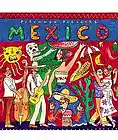
'EL SALON MEXICO' IS A TONE POEM WRITTEN IN 1936 BY AARON COPLAND. IT IS ONE MOVEMENT AND USES 9 MEXICAN FOLK TUNES. IT WAS PREMIERED BY THE MEXICO SYMPHONY ORCHESTRA IN 1937 AND WAS A HUGE SUCCESS. PERFORMED BY THE 1969 ILLINOIS UNIV. SYMPHONIC BAND
highschool bands
jazz bands
college bands
all region bands
community bands
concert bands
honor bands
interlochen arts academy
marching bands
national music camp
tmea all state bands
university bands
Story behind the song
This is performed by the 1969 University of Illinois Symphonic Band, conducted by Mark Hindsley. Mr. Hindsley also arranged this piece for concert band.
El Salon Mexico is a symphonic composition in one movement by Aaron Copland, which uses Mexican folk music extensively. The work is a musical depiction of an eponymous dance hall in Mexico City and even carries the subtitle, "A Popular Type Dance Hall in Mexico City." Copland began the work in 1932 and completed it in 1936. The Mexico Symphony Orchestra gave the first performance under the direction of Carlos Chavez (1937). The piece was premiered in the U.S. in 1938. Although Copland visited Mexico early in the 1930s, he based this tone poem not on songs he heard there, but rather on written sheet music for at least four Mexican folk songs that he had obtained: "El Palo Verde," "La Jesusita," "El Mosco," and "El Malacate." The powerful refrain that appears in the piece three times stems from "El Palo Verde." Critics have variously described the piece as containing two, three, or four parts, but many listeners find that it moves seamlessly from one theme to another with no clear internal boundaries.
At least two arrangements of the piece exist in addition to the orchestral score. Copland adapted the work for the 1947 musical film Fiesta, directed by Richard Thorpe for MGM. Leonard Bernstein created arrangements for solo piano and for two pianos, four-hands very shortly after the premiere.
Copland determined he would write a "musical potpourri" that would convey his impression of the Mexican people. He realized that as an outsider he might miss the mark: "I felt nervous about what the Mexicans might think of a 'gringo' meddling with their native melodies." But he discovered he needn't worry when, "at the first of the final rehearsals that I attended … as I entered the hall the orchestral players, who were in the thick of a Beethoven symphony, suddenly stopped what they were doing and began to applaud vigorously." The work was premiered by Chavez conducting the Mexico Symphony Orchestra on August 27, 1937, and was a critical and popular success.
In creating his potpourri, Copland borrowed at least nine Mexican folk tunes from two collections he received during his trip, El Folklore y la Musica Mexicana edited by Ruben Campos and Cancionero Mexicano by Frances Toor. Most of the tunes use meters of 6/8 or 3/4 time, sometimes in alternation. Copland applied standard folk music practices throughout the work, such as harmonizations in parallel thirds and sixths, slides in pitch, clarinet cadenzas, string glissandos, and some call-and-response constructions.
The work consists of an introduction and four major segments, alternating slow-fast-slow-fast. A trumpet solo following the introduction is the longest quoted melody from Compos' collection, a tune called El Mosco. A slow "Mexican hat dance" segues into a lyrical, broad melody that ends with a repeated trumpet call, announcing the second, faster segment. This builds to a crashing close, followed by the so-called "siesta" section, introduced by a solo clarinet and violin. Lyrical, "sleepy" melodies alternate, followed by an insistent, rocking melody that gradually increases in tempo. The finale builds in rhythmic intensity and melodic complexity, when, as Copland writes, "I present the folk tunes simultaneously in their original keys and rhythms. The result is a kind of polytonality that achieves the frenetic whirl I had in mind before the end, when all is resolved with a plain unadorned triad."